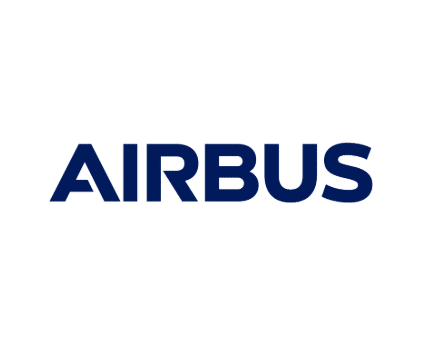🚀 Think you’ve got what it takes for a career in Data? Find out in just one minute!
As an employee, it is worth checking with your employer whether they are willing to cover the cost of your training. Under certain conditions, your company can also support you through the Qualification Opportunities Act or the Qualification Allowance.
Simply get in touch with us, and we will explore the possibilities together!

Do you want to gain new skills alongside your job, but are unsure how to convince your managers to support you in this endeavour?
We have put together a clear and practical guide with helpful tips and key arguments to guide you through the conversation.
The Qualification Opportunities Act (QCG) was introduced in 2019 to support employers in developing their staff and to provide financial assistance for further training.
This law to strengthen vocational training support was further expanded on 1 April 2024. As a new measure for employee qualification, the Qualification Allowance is now available. It is aimed particularly at employees whose jobs are strongly affected by the accelerated transformation of the working world. Employees can apply for this support if a significant share of their workforce (20% in companies with at least 250 employees, or 10% in smaller companies) has a qualification need due to structural change.
Depending on company size, the Federal Employment Agency can cover up to 100% of training costs and also subsidise employees’ salaries.
Alternatively, through the Qualification Allowance, it is possible to receive a wage replacement benefit of up to 67% of net salary for the duration of the training.
… provides skills, knowledge and abilities beyond short-term, job-specific adjustment training,
… is provided by a training provider approved for funding,
… is delivered by an external provider and lasts at least 120 hours.
Our data science, big data and AI courses are tailored to the job market of the future and prepare participants to thrive in the digital economy.
DataScientest and all our programmes are AZAV-certified and therefore eligible for funding under the Qualification Opportunities Act.
The workload of our programmes ranges from 300 to 550 hours.
… provides skills, knowledge and abilities beyond short-term, job-specific adjustment training,
… is provided by a training provider approved for funding,
… is delivered by an external provider and lasts at least 120 hours.
Our data science, big data and AI courses are tailored to the job market of the future and prepare participants to thrive in the digital economy.
DataScientest and all our programmes are AZAV-certified and therefore eligible for funding under the Qualification Opportunities Act.
The workload of our programmes ranges from 300 to 550 hours.
… completed their initial vocational training at least two years ago,
… has not participated in a training funded by the Qualification Opportunities Act within the last two to four years.
These requirements do not apply in the case of:
companies with fewer than 250 employees,
employees over the age of 45,
employees with severe disabilities.

Our advisors will answer all questions about the application process, funding procedure and level of support.
Quickly and easily arrange a meeting with our experts and start your data journey with the help of the Qualification Opportunities Act.

Use this opportunity to ask any questions! Our team will have the answers and can assist in just a few minutes.
Complete the initial assessment form and schedule an appointment with the Employment Agency. Once your employer has completed the application for the wage subsidy and you have submitted the employee declaration, you will receive the training voucher from the agency. Forward it to us and you’re ready to start!
German bureaucracy can sometimes be overwhelming. If you feel lost, have questions, or need assistance, don’t hesitate to reach out to us. Our advisors are here to help and advice you from Monday to Friday.
|
< 50 employees |
50 - 499 employees |
≥ 500 employees |
|
|---|---|---|---|
| Contribution to training costs: | 100% | 50%1, 2 | 25%2 |
| Wage subsidy: | 75%2 | 50%2 | 25%2 |
| Contribution to training costs: | Wage subsidy: | |
|---|---|---|
|
< 50 employees |
100% | 75%2 |
|
50 - 499 employees |
50%1, 2 | 50%2 |
|
≥ 500 employees |
25%2 | 25%2 |
Would you like a compact overview of the Qualification Opportunities Act to share with your manager? Simply download our free flyer and get a brief and concise overview!
With DataScientest, you have a partner who supports you from the application process to pedagogical assistance and the organisation of internal corporate training.
You can find all the strongest arguments to convince your employer that we are the best choice summarised in our guide!


























No, there is no age limit. The Qualification Opportunities Act applies to all age groups. Employees over the age of 45 even benefit from an advantage: if they work in a company with fewer than 250 employees, training costs can be reimbursed up to 100%. In this case, it is also not mandatory that their last vocational qualification was more than four years ago.
Yes, that is generally possible. A bachelor’s, master’s, or doctoral degree, as well as vocational training, fall into the category of a professional qualification. The only requirement is that the professional qualification must have been obtained at least four years ago.
In general, the Federal Employment Agency can reimburse additional costs such as travel expenses. For our courses, however, this does not apply as they are offered entirely online. This provides maximum flexibility for participants to organise their learning schedule.
If the training is part-time and takes place, for example, in the evenings or on weekends, it is essential to define clear terms with the employer before starting. If a course requires, say, 10 hours per week, it should be agreed whether the time spent counts as working time. If so, and the employee works two hours in the evening, they could leave work two hours earlier. This ensures no overtime is added to the normal working hours.
However, it is also possible to agree with the employer to conduct a certain portion of the training during working hours and the rest during leisure time. Such an agreement should be individually arranged between the employer and the employee and communicated accordingly with the Employment Agency.
In certain cases, yes. Exceptions apply to companies with fewer than 250 employees, employees over the age of 45, and employees with severe disabilities.
As always, the earlier the better. Based on our experience and discussions with the Employment Agency, we recommend starting the process at least one month before the course begins. If that is not possible, get in touch anyway and we will work with you to find an individual solution.
Processing time depends heavily on the workload of the Employment Agency. It is possible to receive an initial assessment within a week. The speed then depends on how quickly and completely the required forms are submitted. If no additional questions arise, the process is faster.
For the initial assessment, this is not strictly necessary. The focus is first on the company and the employee to be trained. However, providing the course ID number and the training provider in advance can speed up the process by giving the Employment Agency a complete overview from the start.

